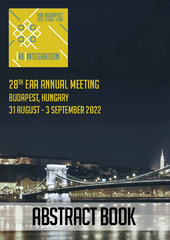Приказ основних података о документу
Imported molluscs in the Central Balkans and Southern Carpathian Basin in the Neolithic revisited
| dc.creator | Vitezović, Selena | |
| dc.creator | Rajković, Dragana | |
| dc.date.accessioned | 2024-02-02T08:17:49Z | |
| dc.date.available | 2024-02-02T08:17:49Z | |
| dc.date.issued | 2022 | |
| dc.identifier.isbn | 978-80-88441-02-1 | |
| dc.identifier.uri | http://rai.ai.ac.rs/handle/123456789/1572 | |
| dc.description.abstract | The trade and exchange of marine mollusc shells in the Neolithic and the Eneolithic in Europe is a very interesting topic that attracted attention by many scholars. The phenomenon of Spondylus trade in particular was addressed from different perspectives. However, the entire European region is not researched in an uniform way. In regions such as present-day Bulgaria or Hungary the evidence of marine molluscs is rich and diverse, mainly due to intensive research of cemeteries with rich burial equipment. The archaeological record from the area in between, namely western and central Balkans and the southern Carpathian basin (roughly present-day Serbia and Croatia) is somewhat different; furthermore, it was never systematically studied. The aim of this paper is to provide an overview of current evidence regarding the distribution of the imported marine mollusc shells in this region and also to re-analyse earlier hypotheses in the light of the current evidence. Some 40 years ago, it was suggested, after the information available at the time, that only the sites along the Danube took part in the Spondylus trade during the Late Neolithic. However, mollusc shells were present in the area already in the Early Neolithic Starčevo culture, furthermore, they may be found in the Late Neolithic in the entire Balkan area. The main obstacle for the interpretation is inadequate research, but also specific trait of the Neolithic in the area with very few burials discovered. Findings are limited to predominantly discarded, broken and/or lost ornaments from settlements and the quantity of ornaments seems modest in comparison with other parts of Europe. However, current evidence shows that the ornaments from mollusc were highly valued items, and that the central Balkan area was an important trading route through which these ornaments were further distributed throughout the Neolithic period. | sr |
| dc.language.iso | en | sr |
| dc.publisher | Prague : European Association of Archaeologists | sr |
| dc.rights | openAccess | sr |
| dc.source | 28th EAA Annual Meeting (Budapest, Hungary, 31st Aug. – 3rd Sept. 2022) : Abstract Book | sr |
| dc.subject | bone industry - prehistory | sr |
| dc.subject | koštana industrija - praistorija | sr |
| dc.subject | mollusc shells | sr |
| dc.subject | školjke | sr |
| dc.subject | personal ornaments | sr |
| dc.subject | trgovina i razmena u praistoriji | sr |
| dc.subject | trade and exchange in prehistory | sr |
| dc.subject | Neolithic | sr |
| dc.subject | Neolit | sr |
| dc.title | Imported molluscs in the Central Balkans and Southern Carpathian Basin in the Neolithic revisited | sr |
| dc.type | conferenceObject | sr |
| dc.rights.license | ARR | sr |
| dc.citation.epage | 485 | |
| dc.citation.spage | 485 | |
| dc.description.other | [https://www.e-a-a.org/eaa2022/] [javascript://[Uploaded files/EAA 2022/EAA 2022 Abstract Book 27 August.pdf]] | sr |
| dc.identifier.fulltext | http://rai.ai.ac.rs/bitstream/id/4491/bitstream_4491.pdf | |
| dc.identifier.rcub | https://hdl.handle.net/21.15107/rcub_rai_1572 | |
| dc.type.version | publishedVersion | sr |


